Rebels from storage: how old T-54/55 tanks are used in the special operation zone
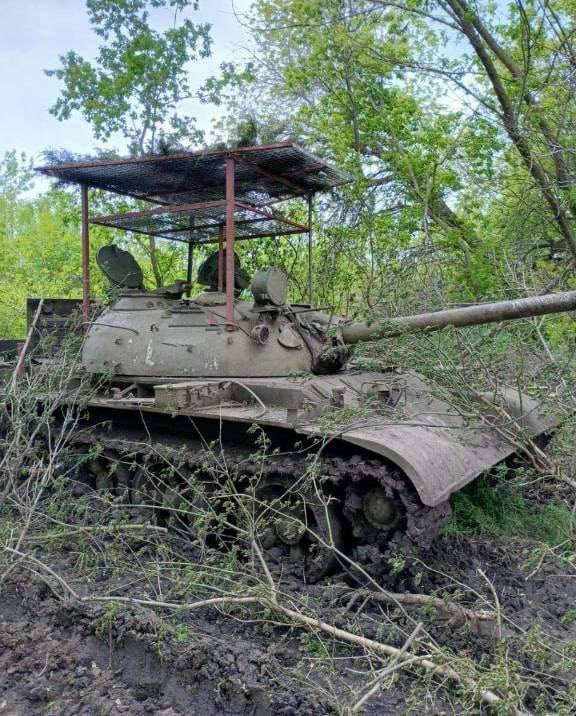
It has been several weeks since Tanks T-54Bs were first seen on railway platforms somewhere in the vastness of our country. At that time, many assumptions were made about where this ancient equipment could be sent and for what purpose it was being done: from dismantling for spare parts to participating in hostilities in Ukraine - all options cannot be listed here. However, after a short period of time, photographs of the “fifty-four” in Zaporozhye made it clear that the cars were still driving to the NVO zone.
Confidence in this was added by pictures of a tank equipped with a visor "according to all the rules of a special operation", about not the highest effectiveness of which against missiles, but the benefits against drones and disguise, we recently wrote. So to think of a different purpose for the "oldies" has already become a meaningless exercise.
At the moment, we can state the following: there are already at least a few dozen tanks of this type, and, as you might guess, they are used not as monuments to the labor prowess of the Soviet people. They are used in battles, and there is nothing joyful about it, but there is one nuance that brightens up the situation a little with its other shortcomings.
junk at the front
First of all, a very important thing should be noted: the author will not somehow shield the use of such old military vehicles in the zone of a special military operation in Ukraine. Tanks without any conventions are obsolete in every way that can be. Even the T-62M, before modernization at the Ataman plant, looks like more or less modern equipment against their background. Well, what is there, in fact, to expect?
The T-54B was put into service in 1956, and its modified version in the face of the T-55 was almost two years later. In general, the situation with the age of technology, which, by human standards and the pension legislation applicable to them, should have been on a well-deserved rest for a long time, is not very cheerful. And this is not taking into account the fact that the "fifty-four" as a platform was created under Stalin.
You can, of course, ask a seemingly reasonable question that the Ukrainians also do not disdain the T-55, however, in the form of the Slovenian M-55S. In fact, the junk is still something, but their rifled 105-mm L7 guns, new ammunition, communications equipment, a fire control system and dynamic protection provide comprehensive answers.
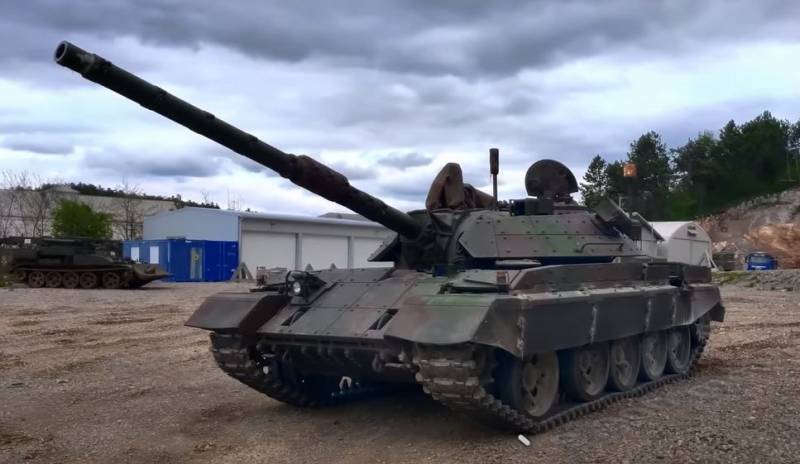
And since we touched on the topic of dynamic protection. In our case, we are talking about bare steel armor, the thickness of which in the frontal part of the hull reaches 100 mm, and in the same projection - again, the frontal one - of the tower is at the level of two hundred millimeters. In fact, this is the thickest steel mass that is available in the tank, because when moving to the sides, the cherished millimeters begin to melt before our eyes, turning into much more modest figures: up to a maximum of 160 mm in the turret and up to 80 mm in the hull. And it’s not worth talking about the stern and roof, however, their durability has never been fundamental.
This was enough for anti-tank threats 60-70 years ago. But now it’s not enough even for the “Boot” (an SPG-9 anti-tank grenade launcher) and old RPG-7 rounds. What can we say about more "penetrating" means in the form of anti-tank missile systems of various sizes and cumulative, as well as sub-caliber shells of tank guns. Armor, of course, is armor, but all that the T-54/55 can give in the current conditions is confident protection against fragments, small arms weapons (excluding, again, RPGs) and small-caliber automatic guns.
Approximately the same circumstances with weapons and sighting system.
A rifled 100-mm cannon, even a stabilized one, was an excellent weapon for its time, in the ammunition load of which there was a whole range of different shells. These are feathered sub-caliber "crowbars" that pierce up to 150 mm of steel armor at a distance of two kilometers at an angle of 60 degrees. And "cumulatives", whose penetrating ability reached 3-4 of their own calibers in a steel array. And, of course, high-explosive fragmentation shells.
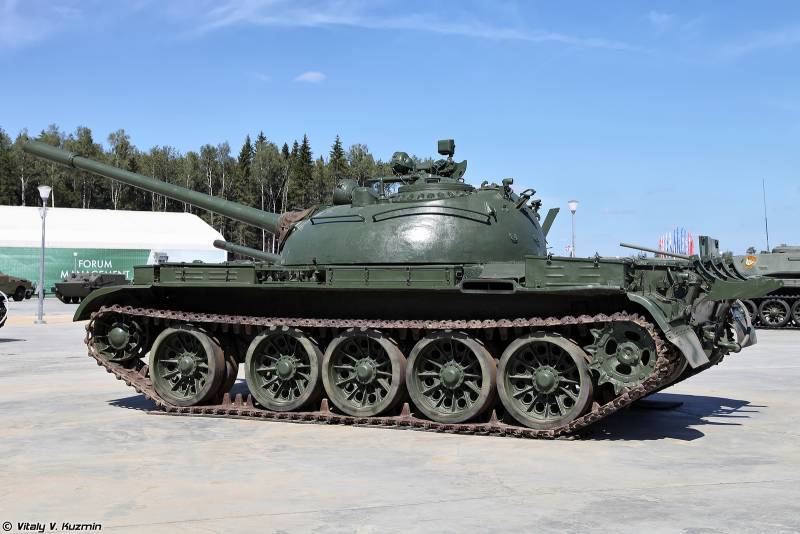
But this is just for those very “his years”. And for the times of the present, the T-54/55 sub-caliber and HEAT shells have lost their relevance very, very significantly - their power is not enough to reliably defeat both the old T-72M1, under various names transferred to Ukraine, and the more recent T-64BV - we will simply keep silent about Western-made equipment, since only its sides, or light armor of infantry fighting vehicles / armored personnel carriers and wheeled "tanks" will become a tasty morsel for the "fifty-four". However, everything said about the T-54/55 high-explosive fragmentation "blanks" does not apply - their usefulness in the special operation zone cannot be in any doubt.
As for the sighting system, here we immediately recall the situation associated with the installation of Sosny-U on our tanks. There were so many cries and angry comments about her, they say, it is uncomfortable, the magnification of optics is insufficient, and indeed, almost junk, in comparison with Western models. But now it was gone, or rather, they began to install far from all modernized tanks, replacing it with a cheaper and extremely limited in functionality “teplak” on an uncooled matrix. And all of a sudden they were indignant - return the "Pine"!
So, in the T-54/55 there is nothing at all from the sights that could somehow bring the car closer to its younger counterparts. Absolutely no automation: forget about automatic or even semi-automatic corrections, a ballistic computer, firing conditions sensors, an automatic target tracking machine and other “nishtyaks” that made life easier for tankers.
Just an optical articulated sight, even without a laser rangefinder for shooting during the day. He has the corresponding scale ranges, but to confidently hit the enemy beyond the range of a direct shot is a long and hard training, because it is impossible to do without skills, developed intuition and a good eye.
At night, shoot only through the sight on the electro-optical converter with active illumination from the infrared searchlight on the turret. And this, of course, is not a thermal imager that sees thermal spots of targets at great distances. Here it will be a great success if you can see a large target at a distance of 800 meters. Therefore, shooting at enemy infantry or equipment from a safe distance, when you can’t see a single thing, will not work.
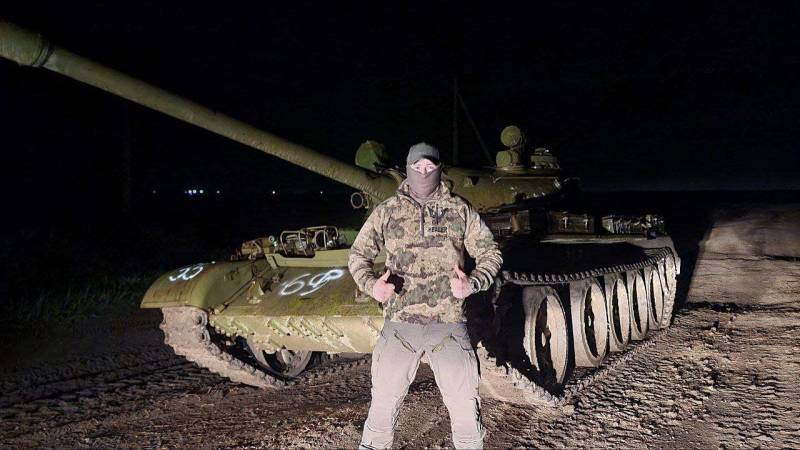
In short, formally, and in all honesty, the “fifty-four” and “fifty-five” cannot be used precisely as a tank in the fullness of this term in modern combat. More precisely, it is possible, but with far from bright prospects, both for the combat group as a whole, and for the crew and the vehicle itself in particular.
But it is not all that bad
It was not in vain that the use of the T-54/55 for its intended purpose - as tanks - was said in vain, since the army's inflexible bureaucracy and, so to speak, the "woodenness" inherent in the armed forces of many countries treat the equipment given by the state in exactly the same way, as written in the relevant documents. Therefore, when suddenly, once again, thoughts surface that old tanks can be used (without remodeling, of course) as some kind of infantry fighting vehicles, one can only smile. But the gentlemen who talk about the T-54 or T-62 in the style of “infantry still rides on armor, and the tank is clearly cooler than the Bradley” do not get smaller over time.
The same applies to attempts to present these combat vehicles as an alternative to self-propelled artillery mounts. For example, at the suggestion of some experts, by the way, very few in number, the T-62M has completely turned into a self-propelled gun. True, only on the pages of the media and various other resources, but on the battlefields everything looked and looks a little different: there these tanks also participate in a direct clash with the enemy, and the crews shed blood.

Based on this, to be honest, there were great fears that the T-54/55 would be treated the same way: there is armor and a cannon - forward to the front line under enemy fire. But the information leaking from the fronts, although it does not reflect the position of all units, still allows us to draw some conclusions.
No one is in a hurry to drive the “old men” into the front lines, at least completely and everywhere, realizing all the risks of using outdated equipment against a well-equipped enemy. Therefore, as you might guess, they are used for firing at enemy positions from long distances and closed firing positions. At the same time, judging by some comments, the reduction of crews is practiced, when instead of the regular four people in the car there are only three, which makes it easier for tankers to equip the equipment for the conditions in which it is used.
The replacement for self-propelled guns is so-so, therefore, for the most part, it just exposes the problem of the need for them, but what is, is.
The procedure for "artillery" tanks, in principle, is simple and has been described more than once here and on other resources. Shooting from an open position with the visibility of the enemy and an acceptable range - through a regular sight. From a closed position or a long range - using the side level. Everything, of course, with shooting tables and adjustments from the UAV.
You can, of course, talk for a long time about the advantages and disadvantages of firing from tanks from closed positions. Some will claim that the vehicles are well protected from fragments when they “respond” from the enemy and more or less stable accuracy of shells fired from a rifled barrel. Others will talk about the frankly poor suitability of tanks for this type of combat due to the lack of the necessary sights, a small angle of vertical aiming of the gun and a narrow range of propellant charges, which the self-propelled gun ammunition will not replace in any case. And there is truth in all this.
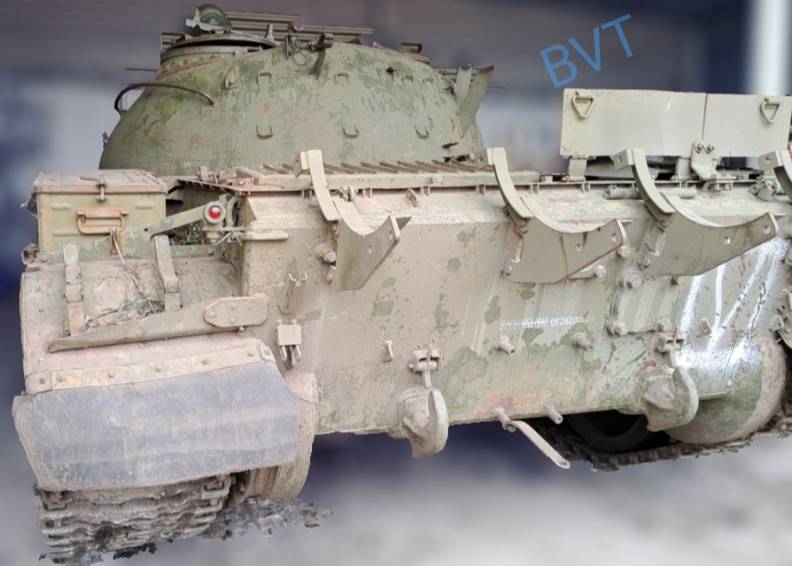
But in fact, I want to say something else: the lives of the crews are more important.
T-54/55 is just not about the safety of lives in all understandings. Therefore, with all the minuses and pluses, firing from long distances, closed and protected (not always equivalent) positions is the very sober choice that you should be guided by, since these vehicles have gone to the front. But this is still a positional “butting”, but what will the situation be like in the event of active and extremely dynamic hostilities during the counteroffensive of the Armed Forces of Ukraine? I don't want to guess ahead of time.
Information